As hiking packs grow in volume they seem to become more daunting and ever more technical, and while large backpacking backpacks do incorporate more features than your small daypack, the principle remains the same: to carry your gear comfortably.
It’s just with a backpacking backpack, there’s more gear to go in it and therefore it requires more thought around weight distribution, comfort and other such things.
Falling within the ‘backpacking’ sized packs are those at 50 litres or more. This extends to packs up to 100 litres or so, which is an enormous volume variation (see our list of the
best hiking backpacks
for a wider variety of sizes). But it provides options – cavernous packs for those who need it, down to lighter, more compact sizes for hitting the sweet spot between living comfort and carrying comfort.
The ultimate multi-day packs swallow all your gear with ease yet feel stable and distribute weight properly. They are also well-ventilated and continue to be comfortable day after day.
It’s a lot to ask, and only a few manage to pull it off. To help you find these big capacity champion rucksacks, we’ve created this handy round-up guide to the best out there right now.
How we tested the best backpacking backpacks
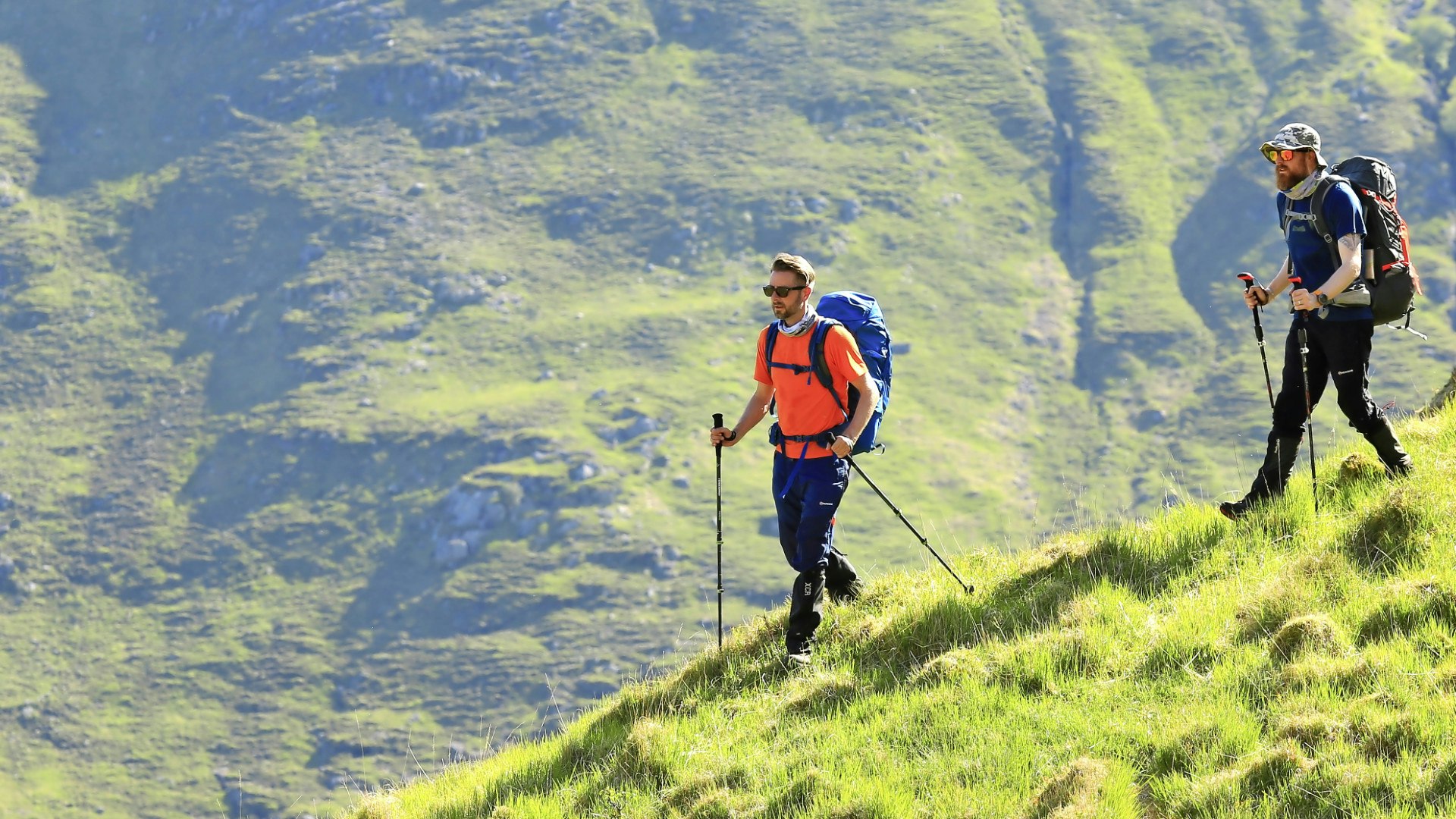
We secured test samples of each pack directly from the brands and used them on backpacking trips over a test period of several months.
The reviewers were
Matt Jones
and
Ellie Clewlow
,
Live For The Outdoors
‘ and
Trail
magazine’s regular gear testers. Both are experienced wild campers, backpackers and long-distance walkers.
They’ve completed numerous trails end to end in the UK, including the Pennine Way, the Cambrian Way, the Cape Wrath Trail, the West Highland Way and the Great Glen Way. They’ve also hiked extensively in the US, Spain, Scandinavia and New Zealand.
Matt carried the Deuter Aircontact Ultra 50+5 on the 268-mile Pennine Way and the Highlander Ben Nevis 65 on the 230-mile Cape Wrath Trail, while Ellie carried the Osprey Eja Pro 55 on Cape Wrath.
Other packs were tested on
wild camping
overnighters and multi-day hikes on trails in Snowdonia, where the pair live and work. This included various sections of the Snowdonia Slate Trail, the North Wales Pilgrims Trail and the Snowdonia Way.
We tested all of these packs against the same criteria, which included features (and how useful they are), the quality of construction, how comfortable they are to carry, how well they performed on multi-day hikes and also value for money.
Read more on how we test here
.
Best backpacking backpacks at a glance
Best backpacking backpack on test:
Osprey Women’s Eja Pro 55
/
Osprey Men’s Exos Pro 55
Runner up best in test:
Lowe Alpine Yacuri 65
Best value:
Gregory Stout 55
Best for durability:
Fjallraven Kajka 55
Best lightweight backpacking pack:
The Atom+ EP50
Editor’s note:
This article was last updated in spring 2025 with new reviews and updated buying advice
.
Best backpacking backpacks reviewed:
How to choose the perfect backpacking backpack
Capacity
For a big walk (days or even weeks) you’ll need 50+ litres. Whether you need 55L or 100L (or anything in between) comes down to what you’re taking. Are you trekking in colder weather? Are you taking creature comforts? If you answer affirmative to questions like these, you’ll be hiking with more gear and therefore need more volume.
Manufacturers calculate volume by filling a pack with 20mm plastic balls, then placing them in a volumetric cylinder for measurement. Most brands include the pockets, while others maximise volume by unrolling storm collars and roll-top closures.
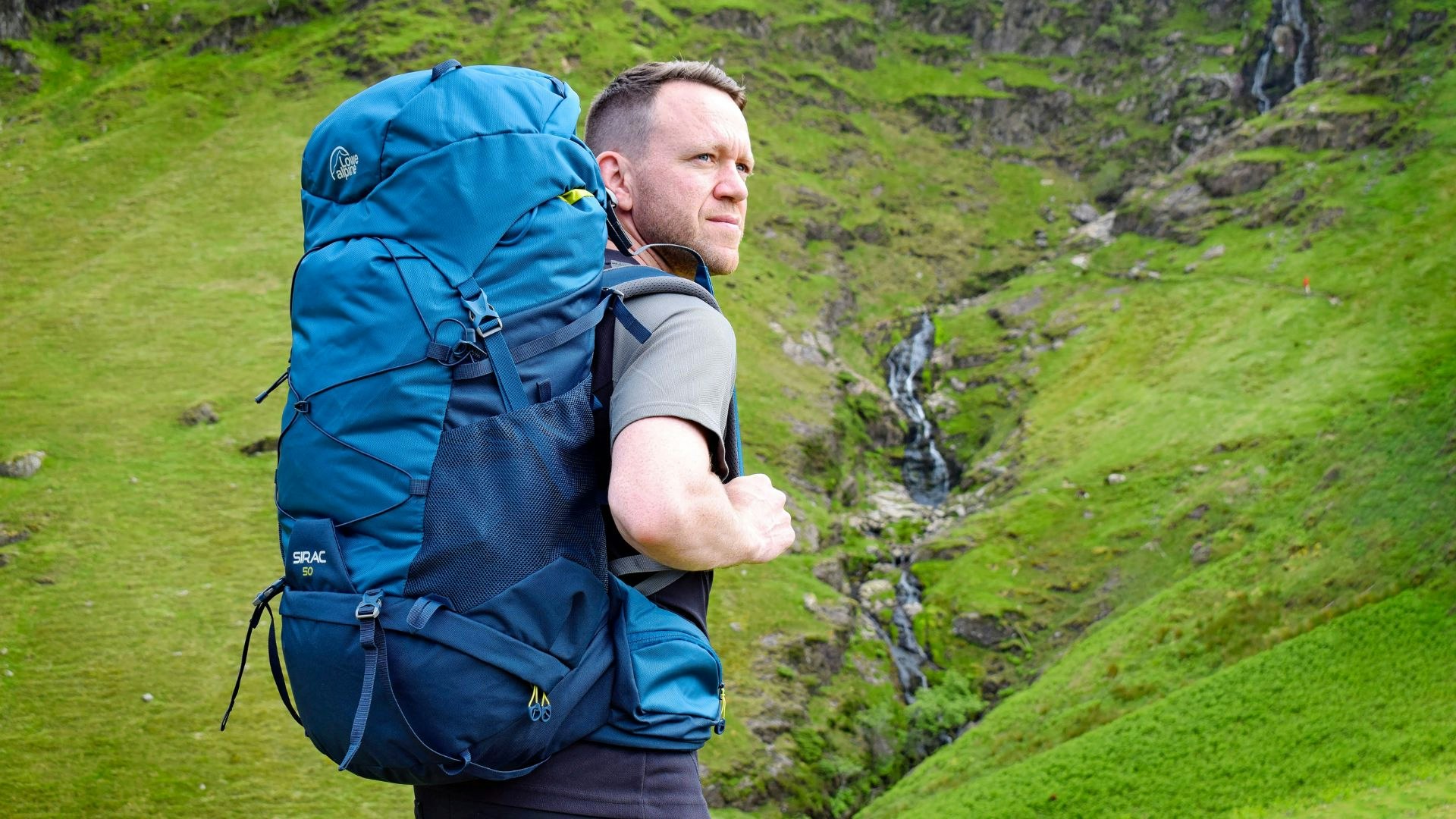
Back sizes
To ensure a good fit, many packs now come in different sizes including women’s-specific versions. Others feature a length-adjustable back panel. To find your size,
calculate your back length
by measuring from your C7 vertebra (the bony bit at the back of your neck) to your iliac crest (the top of your hips) and use this to establish what back length you need.
Back systems
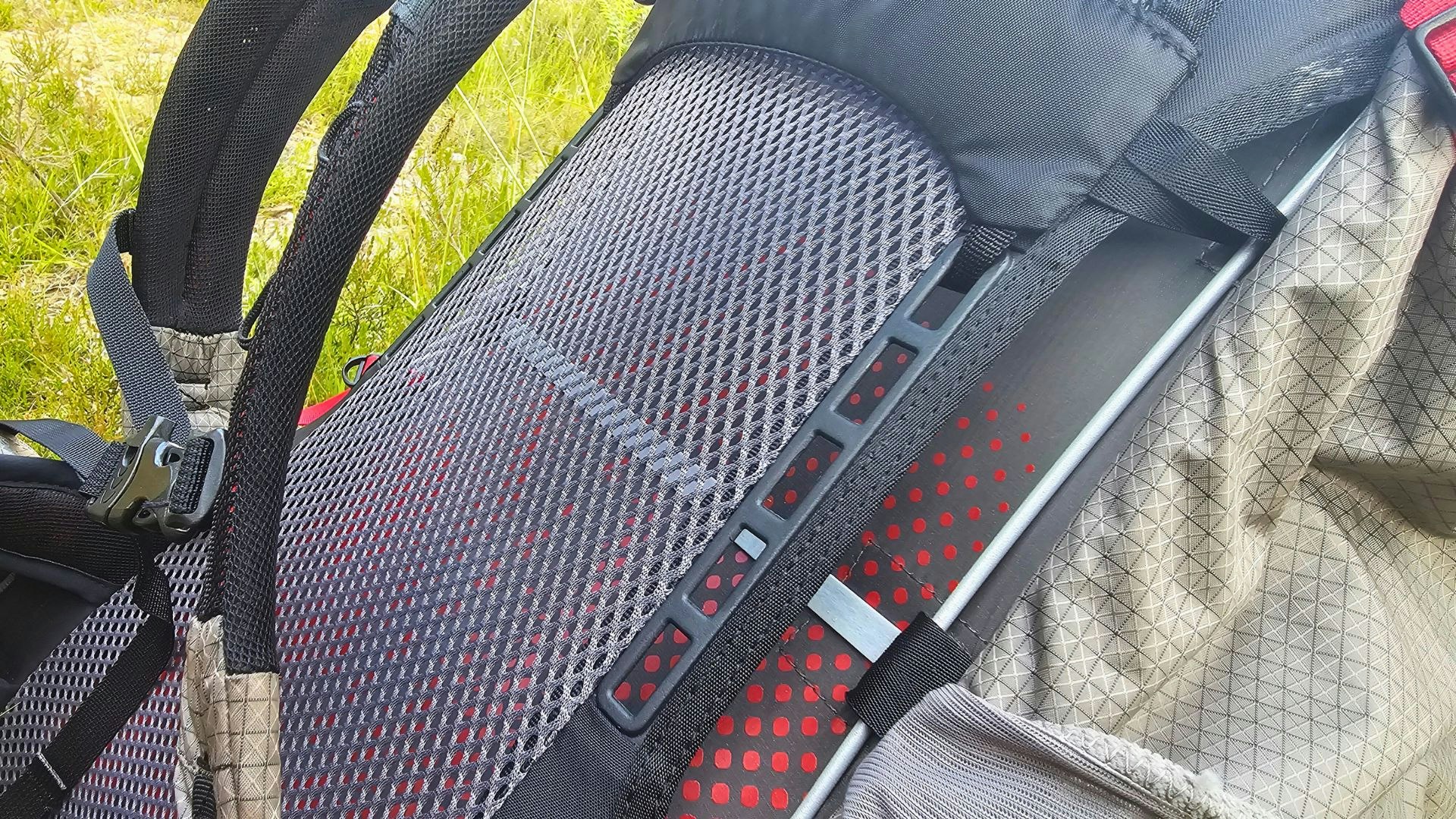
A back system is all about balancing comfort and ventilation with load stability.
The suspended mesh system (like Osprey’s AirSpeed design) are the most breathable. They hold the pack away from your back with a mesh panel that creates a gap between your back and the pack, which helps to stop you from getting sweaty. The trade-off is that because the load is held away from your back, they’re not the most stable.
Other designs hold the pack closer to your body and have highly padded back panels and straps. Comfort and stability is better than suspended mesh designs but aren’t as breathable. To address this, some employ channels or vents interspersed with padded areas for enhanced comfort.
More technical backpacking backpacks tend to keep the weight close to your body for better stability and load transfer.
Harnesses and shoulder straps
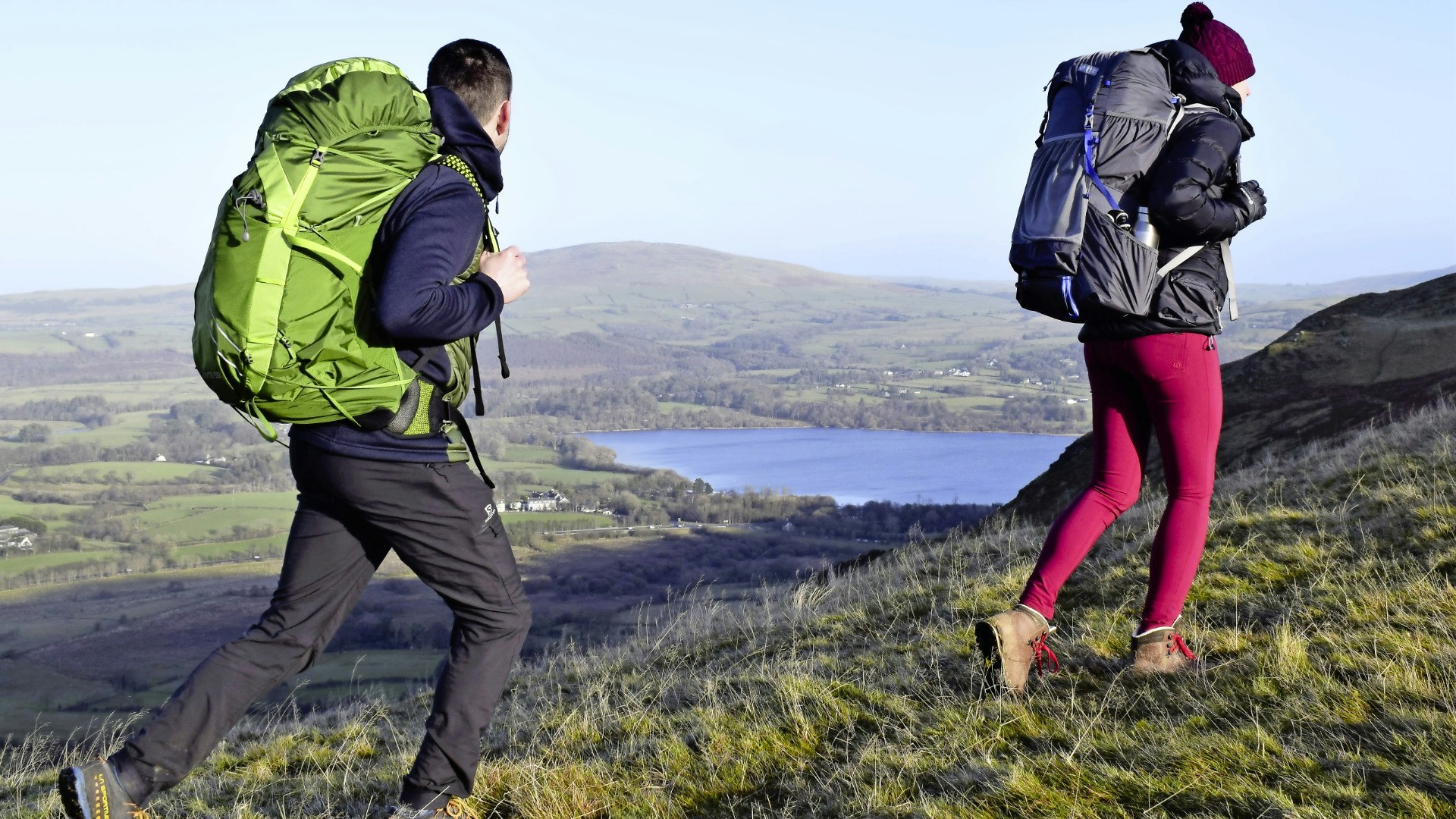
The shoulder straps, hip belt and chest strap form the harness, which is key to carrying comfort and load stability. Look for padded, contoured straps and a supportive hip belt. Your hips should take most of the weight. Many harnesses also feature perforated foam or mesh to improve ventilation.
Is a front zip or top drawcord opening best?
Access is usually via a top drawcord with a lid and buckle over it, though some use a roll-top closure. A roll-top saves weight and is very weatherproof, but a lid usually offers more storage. Floating lids attach to the pack via adjustable webbing straps. This allows you to ‘overstuff’ the top of the pack to carry extra supplies.
But to make access to the main compartment easier, many larger packs have a side or front zip, plus a bottom compartment, separated from the main section via a zipped divider. The latter is often a handy place to store your sleeping bag.
Additional features
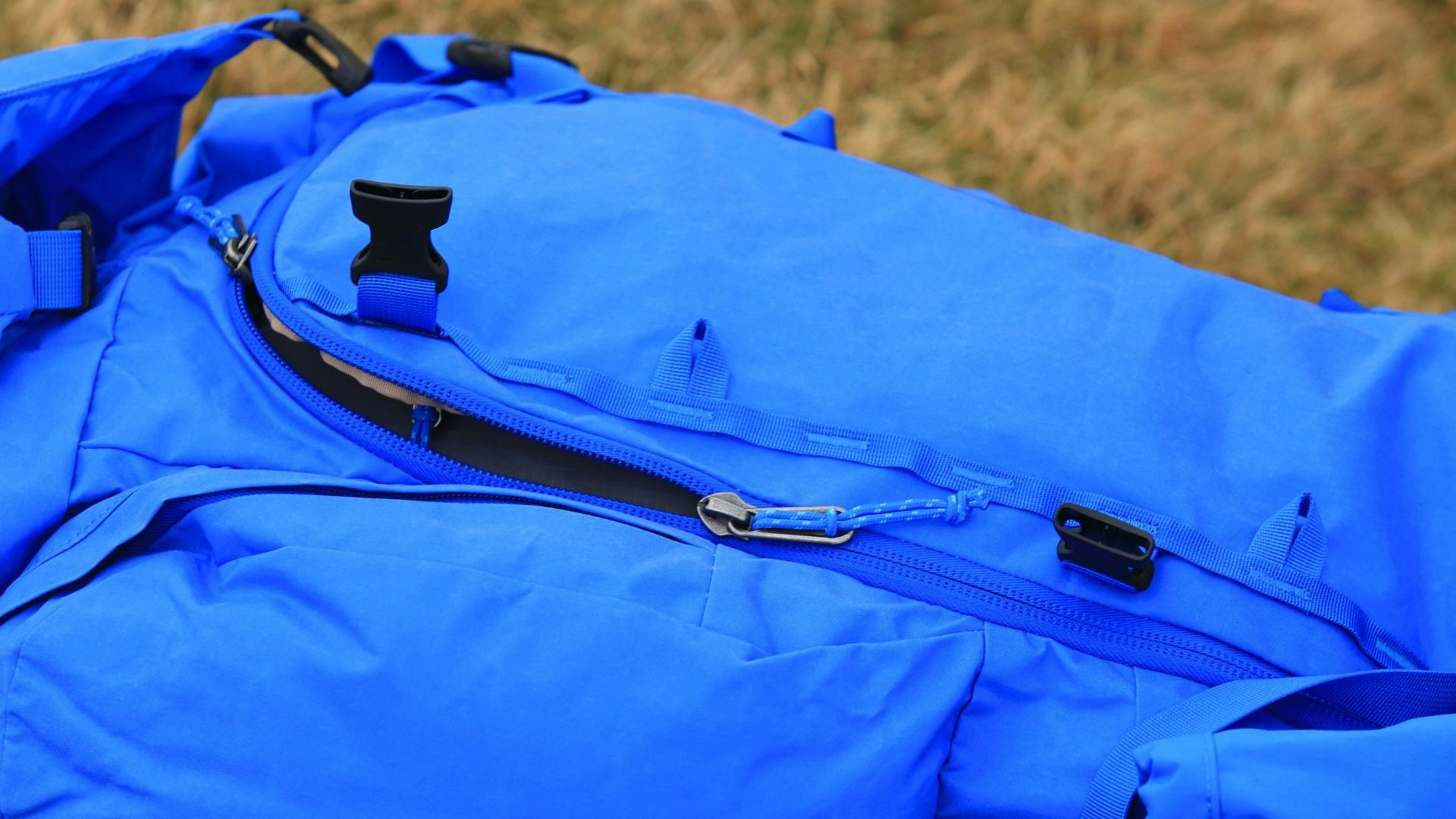
External pockets:
A front stretch pocket is useful for stowing extra layers. Side pockets are good for water bottles. Hip belt pockets are handy for snacks and tech devices, as is a lid or top pocket.
Compression straps:
Most packs have compression straps or cords to cinch in the load for added stability. They can also be used to carry extra gear on the outside of the pack or underneath the lid.
Trekking pole attachments:
Virtually all backpacking backpacks have external webbing or bungee cord loops to attach trekking poles and/or ice axes.
Hydration reservoir pocket:
Planning to use a flexible hydration reservoir and hose? Most rucksacks have provision for a water bladder. This often looks like a hook and elasticated pouch inside the bag, or a dedicated compartment behind the main opening of the pack. There will then be an opening for the hose to thread through.
How do I clean a backpacking backpack?
Although made from tough and durable materials, hiking packs need to be cleaned occasionally to maintain those materials in top condition. Neglect leads to accelerated degradation (and often a gross pack).
Fortunately,
cleaning your pack properly
is easy. It needs doing every season or after heavy use and requires the right cleaning product.
Backpacks are also one of the most repairable pieces of outdoor equipment. So, if a zip is busted, a buckle broken, or a piece of fabric torn, make use of the repair services offered by retailers, brands, and specialist agents like Lancashire Sports Repairs to get your pack fixed. It’s far more cost effective and eco-friendly than throwing away and buying new.
Your testers

Matt Jones
and
Ellie Clewlow
are outdoor writers and photographers with a passion for adventure. They have completed multiple long-distance backpacking trails in the UK, including the West Highland Way, the Pennine Way, the Cambrian Way and the Cape Wrath Trail. They live and work in the heart of Eryri (Snowdonia), North Wales.

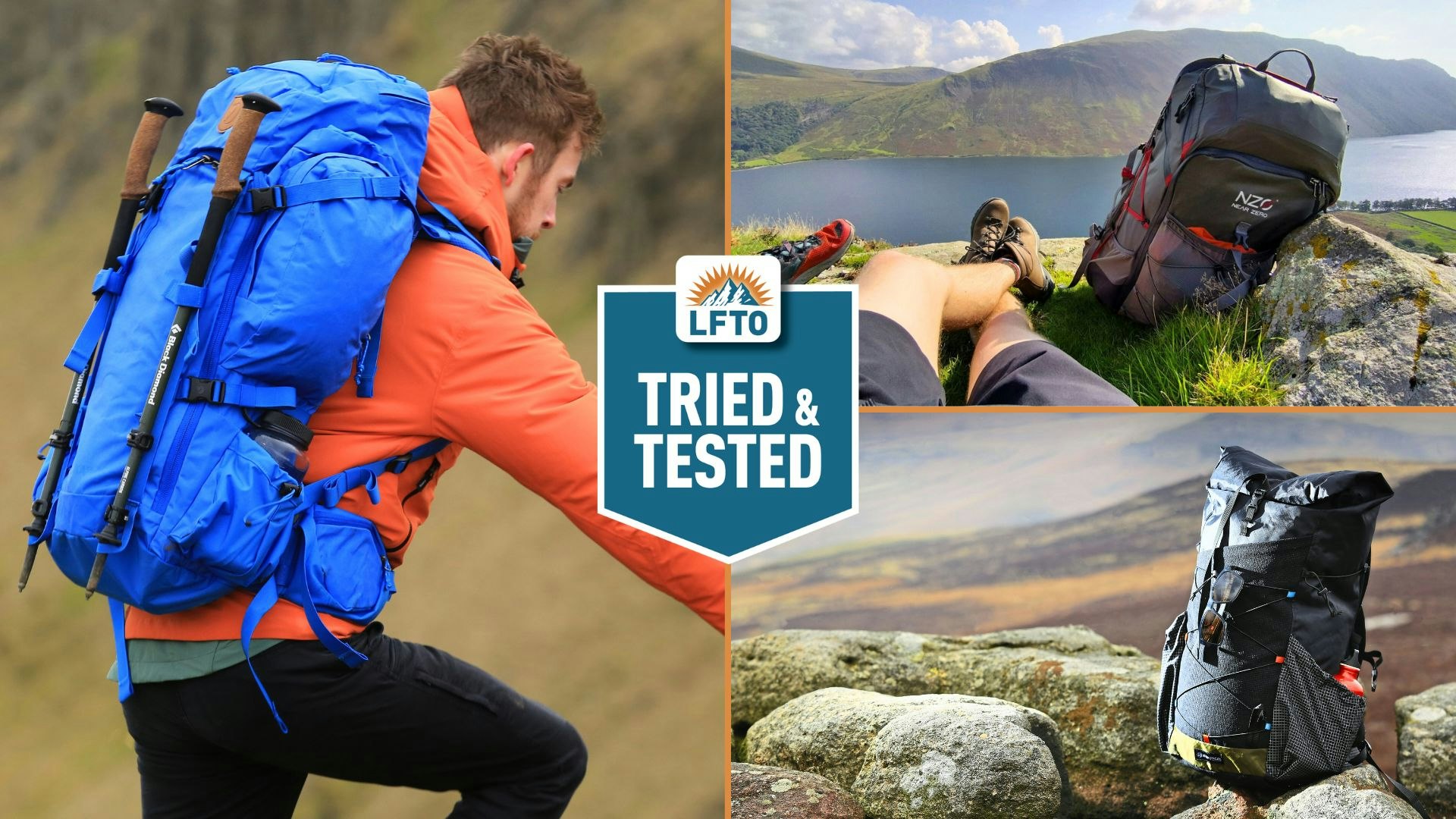











Leave a Reply